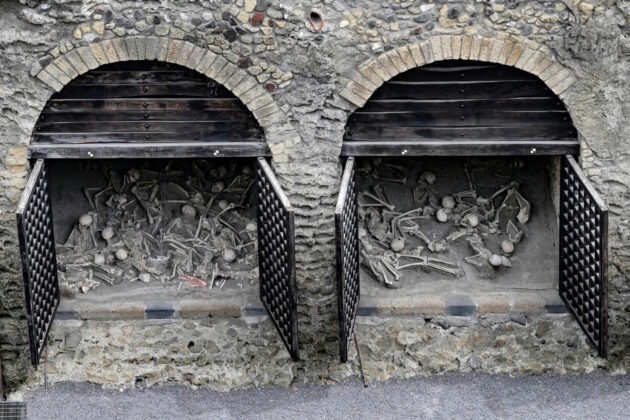History often reveals itself in fragments—shards of pottery, weathered coins, or faded murals—but sometimes it confronts us with a moment so vividly preserved that it feels as though time itself has stood still. Such is the case with the haunting discovery at Herculaneum, the smaller yet equally tragic companion of Pompeii, buried by the eruption of Mount Vesuvius in AD 79.
Among the ruins lies a place now known as the Skeleton House, where more than 300 human remains were found, locked forever in the last desperate moments of their lives. These individuals, ordinary citizens of a thriving Roman town, never knew their struggle for survival would echo across nearly two millennia.
A City Trapped in Volcanic Fury
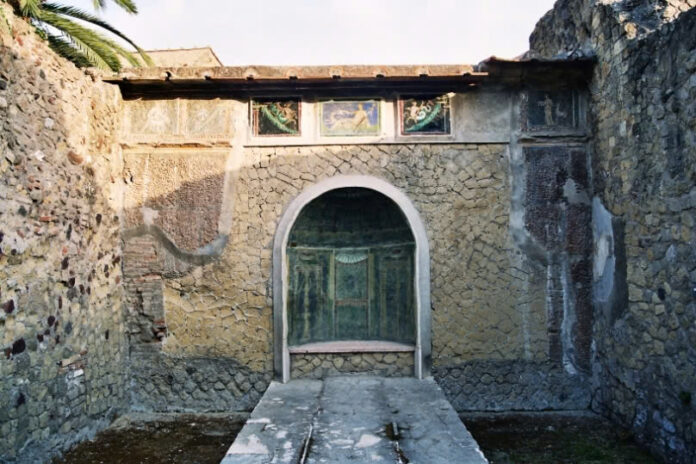
On a summer’s day in AD 79, Mount Vesuvius unleashed a catastrophe that transformed two vibrant Roman communities into eternal time capsules. While Pompeii was smothered under volcanic ash, Herculaneum met a different fate. The coastal town, perched along the Bay of Naples, was engulfed by superheated pyroclastic flows—avalanches of volcanic gas and debris moving at terrifying speeds.
In an instant, houses, temples, markets, and villas were entombed beneath volcanic material. Unlike Pompeii’s gradual burial, Herculaneum’s destruction was sudden, overwhelming, and absolute. Yet paradoxically, it was this very violence that preserved the city in such stunning detail, protecting organic matter, wooden structures, and even food from decay.
The Last Moments of Survival
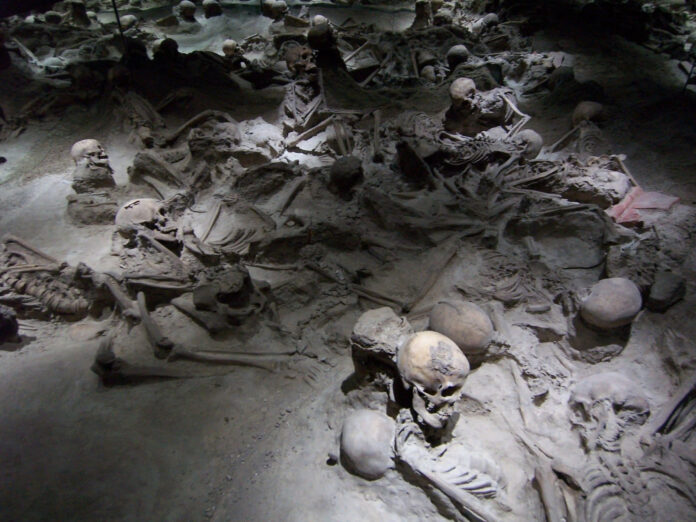
One of the most haunting discoveries in Herculaneum was made in the 1980s, near the ancient shoreline. Excavations revealed over 300 skeletons huddled inside boat chambers and along the beach, where families had gathered in the hope of escape.
They had likely rushed toward the sea, clinging to the hope of rescue ships that never arrived. Parents embraced children, groups clustered together, and belongings were hastily carried. These final moments, immortalized in bone and artifact, speak of desperation, fear, and the universal instinct to protect one’s loved ones.
For centuries, their story remained untold, hidden beneath meters of hardened volcanic rock. Today, their remains stand as silent witnesses to an unimaginable moment of human vulnerability.
A Window into Roman Life
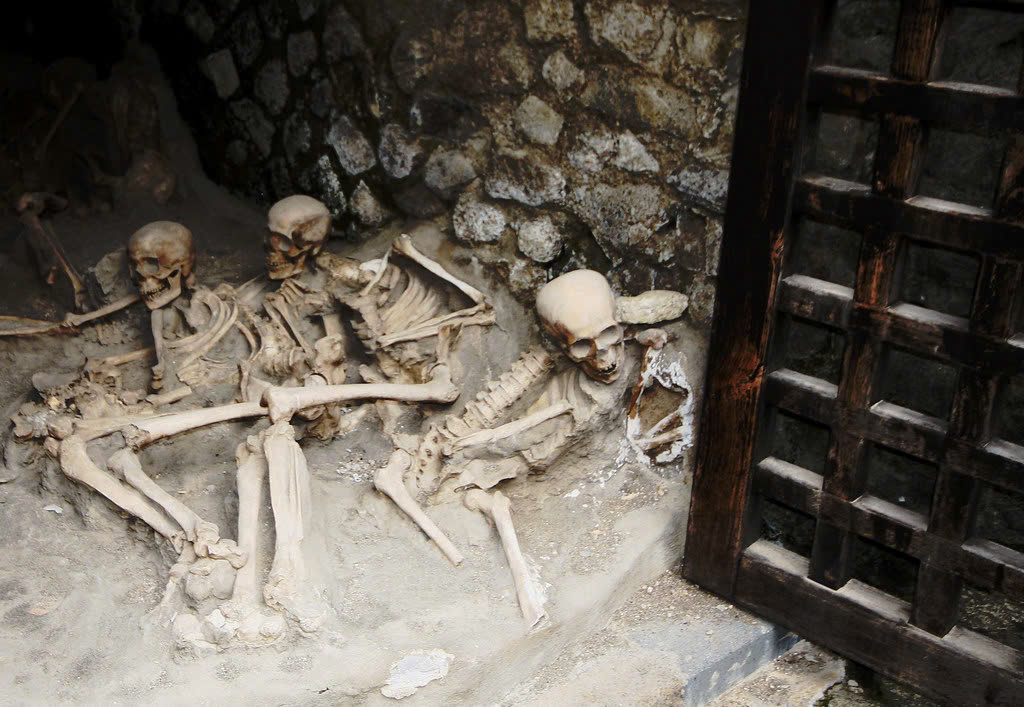
These skeletons are far more than archaeological remains; they are human stories frozen in time. Forensic studies have revealed remarkable details about their lives.
-
Diet and lifestyle: Traces of fish, grains, fruits, and vegetables in their bones reflect the Mediterranean diet of Herculaneum’s people, closely tied to the sea and surrounding fertile land.
-
Health and hardship: Bone analysis has uncovered evidence of nutritional deficiencies in some, while others showed signs of robust health—an indication of the social diversity of the town.
-
Personal belongings: Archaeologists discovered jewelry, coins, tools, and household items among the victims, painting a vivid picture of daily life. Some carried wealth, others only the essentials for escape.
Through these clues, the citizens of Herculaneum emerge not as distant historical figures but as relatable individuals who lived, worked, and dreamed much like we do today.
Unprecedented Preservation
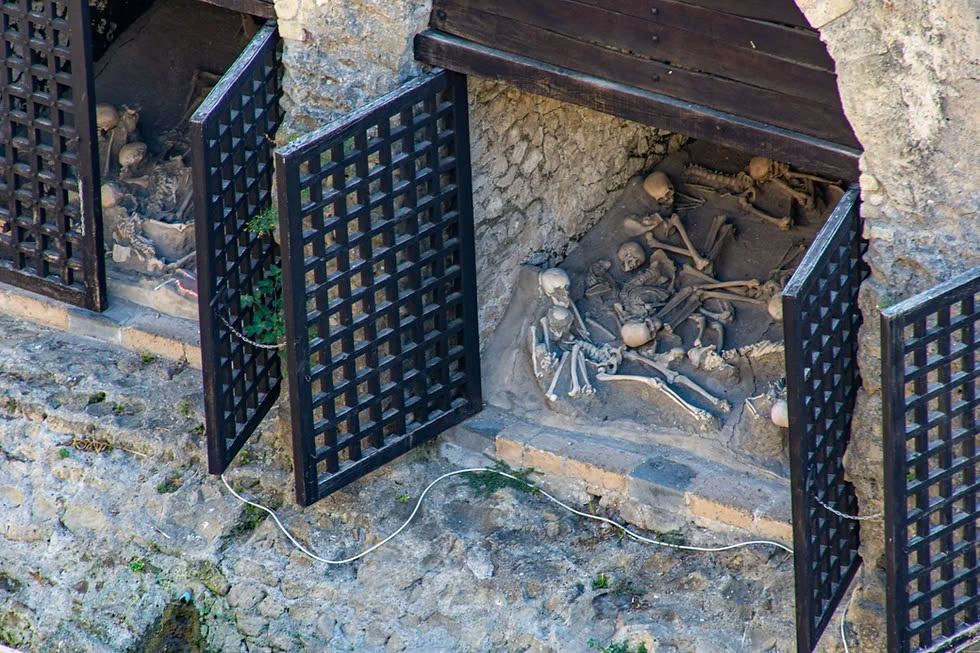
Herculaneum is often overshadowed by Pompeii, but in many ways, it offers an even more detailed glimpse into the past. The intense heat of the pyroclastic flows carbonized organic material instantly, sealing it beneath thick layers of volcanic rock. Wooden furniture, foodstuffs, papyrus scrolls, and textiles survived in conditions unparalleled elsewhere in the Roman world.
The Skeleton House itself became a chamber of memory. Unlike Pompeii’s plaster casts, which capture the voids left by bodies, the remains in Herculaneum are the actual skeletons, their positions preserved exactly as they fell. This provides researchers with unparalleled opportunities to study not only the circumstances of their deaths but also the broader realities of Roman life.
Science Meets Humanity
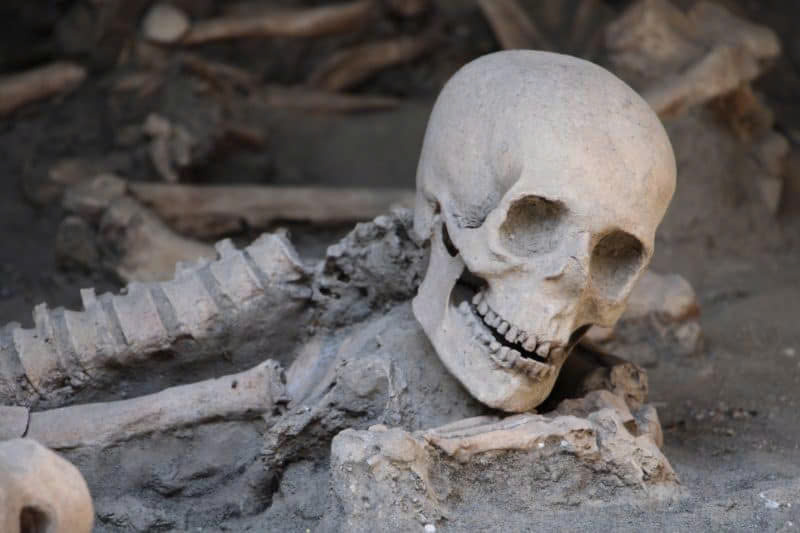
Forensic anthropology has been crucial in unraveling the story of the Skeleton House. By studying the bones, scientists have determined the ages, health conditions, and sometimes even the origins of the individuals.
Some of the remains belonged to young children, others to elderly citizens, and many to adults in their prime. Evidence suggests they came from various social classes—fishermen, merchants, artisans, and families. Their common fate erased the divisions of wealth and status, reminding us that nature does not discriminate.
Through DNA analysis and chemical testing, researchers continue to uncover new details, piecing together a mosaic of lives lived nearly two thousand years ago.
Beyond Archaeology: A Human Connection
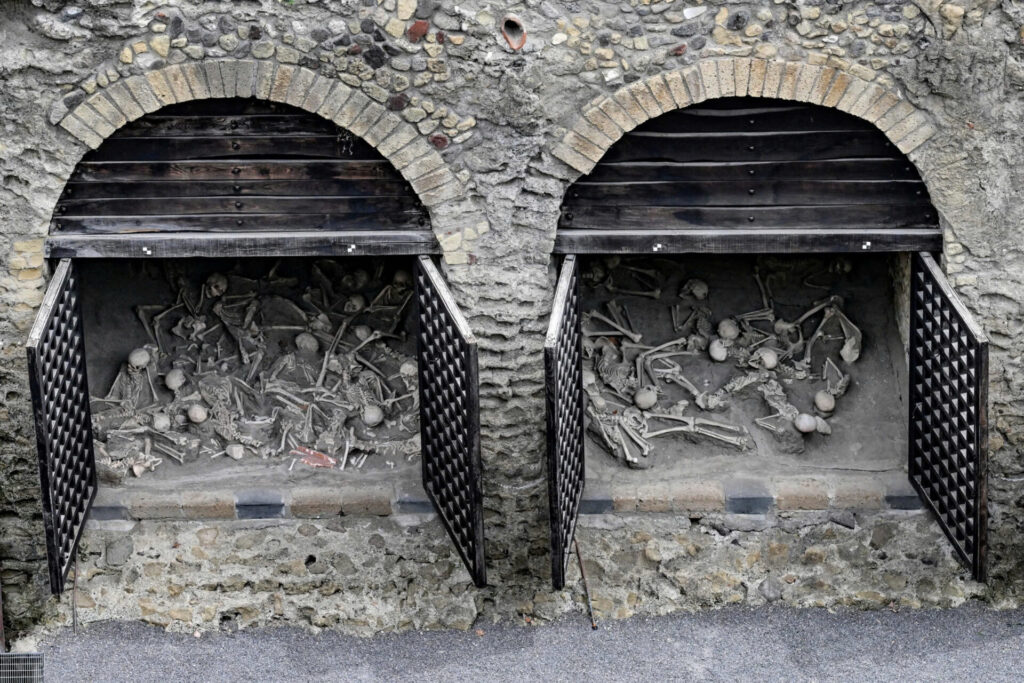
The Skeleton House is more than an archaeological site—it is a powerful reminder of shared humanity. Visitors standing before the remains often describe a deep sense of connection. The posture of the skeletons—the way families clung together, the way belongings were grasped tightly—transcends time and culture.
This discovery bridges past and present, showing that the hopes, fears, and instincts of ancient Romans mirror our own. They loved, feared, and longed for safety, just as we do today. Their tragedy, though rooted in antiquity, resonates universally.
A Timeless Reflection
The story of Herculaneum compels us to reflect on life’s unpredictability. Just as the citizens of this coastal town lived unaware of the volcano looming above them, we too are reminded of our own vulnerabilities. Natural disasters, despite modern technology, still remind us of the fragility of human existence.
And yet, within this tragedy lies a profound message of resilience and connection. The Skeleton House shows us not only how people died, but how they lived, loved, and sought to protect one another until the very end.
Preserving the Legacy
Today, Herculaneum is a UNESCO World Heritage Site, carefully preserved to ensure future generations can learn from its story. Conservation efforts protect the delicate remains of the Skeleton House and the surrounding city, balancing scientific study with respect for the individuals who perished there.
Digital technology, 3D modeling, and virtual reconstructions are helping to bring the site to a global audience, allowing millions to witness the haunting beauty of a moment suspended in time. These tools also help ensure that the Skeleton House continues to educate and inspire without compromising its fragile remains.
Conclusion: Humanity Reflected in the Ashes
The Skeleton House of Herculaneum is not just an archaeological discovery; it is a mirror reflecting our own humanity. It shows us that across centuries, cultures, and empires, the essence of being human remains the same: we work, dream, hope, and love—and in times of crisis, we seek safety in the embrace of family and community.
The people of Herculaneum never lived to see the legacy their final moments would create. Yet in their silent testimony, preserved by the fury of Vesuvius, they left us one of history’s most profound reminders of the fragility and resilience of human life.
Suspended in time, the Skeleton House whispers across the centuries, urging us to remember not just the destruction of AD 79, but the enduring power of human connection.
Sources
-
UNESCO – Archaeological Areas of Pompeii, Herculaneum and Torre Annunziata
-
National Geographic – Herculaneum: A Roman Town Preserved by Vesuvius
